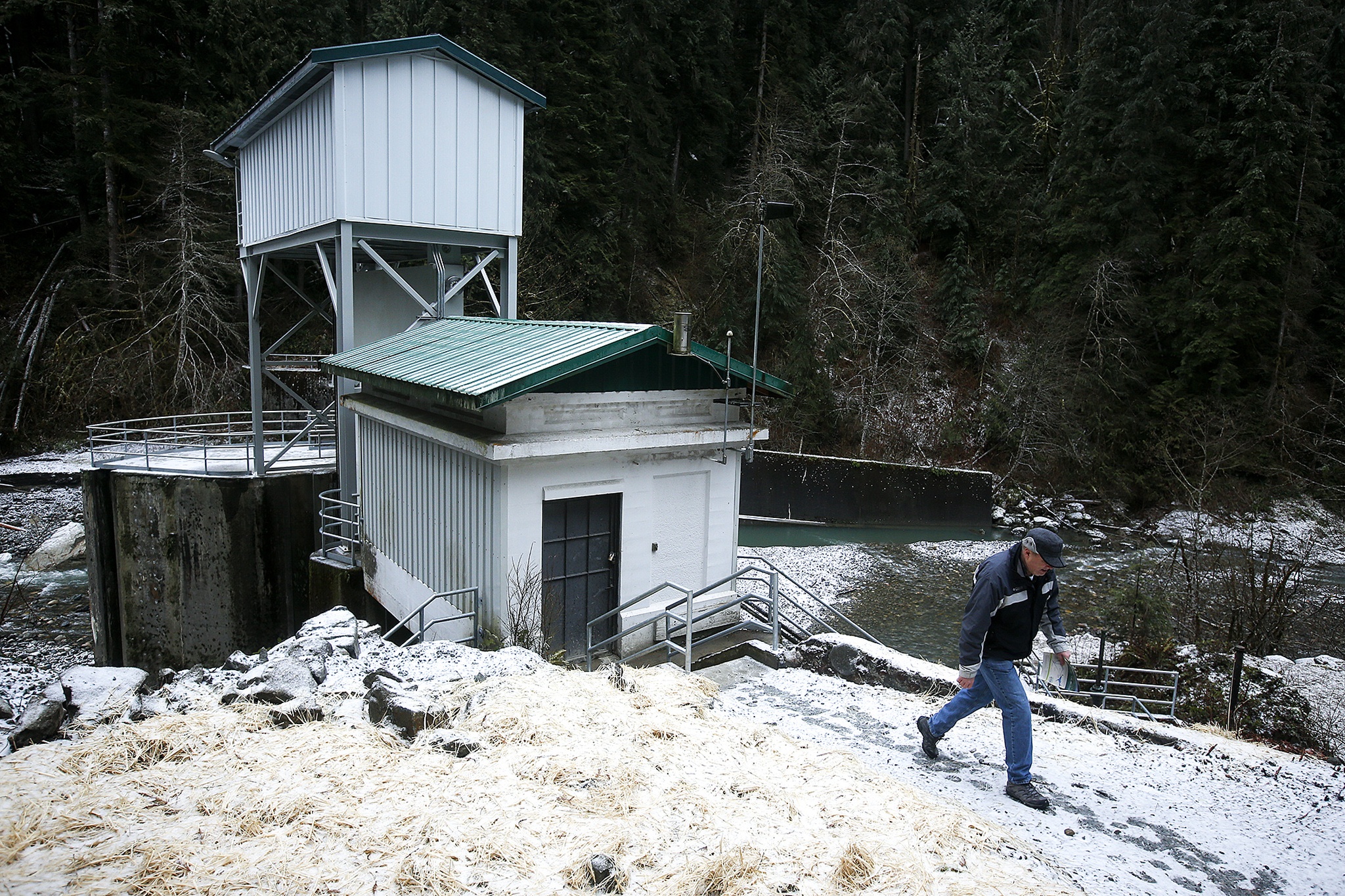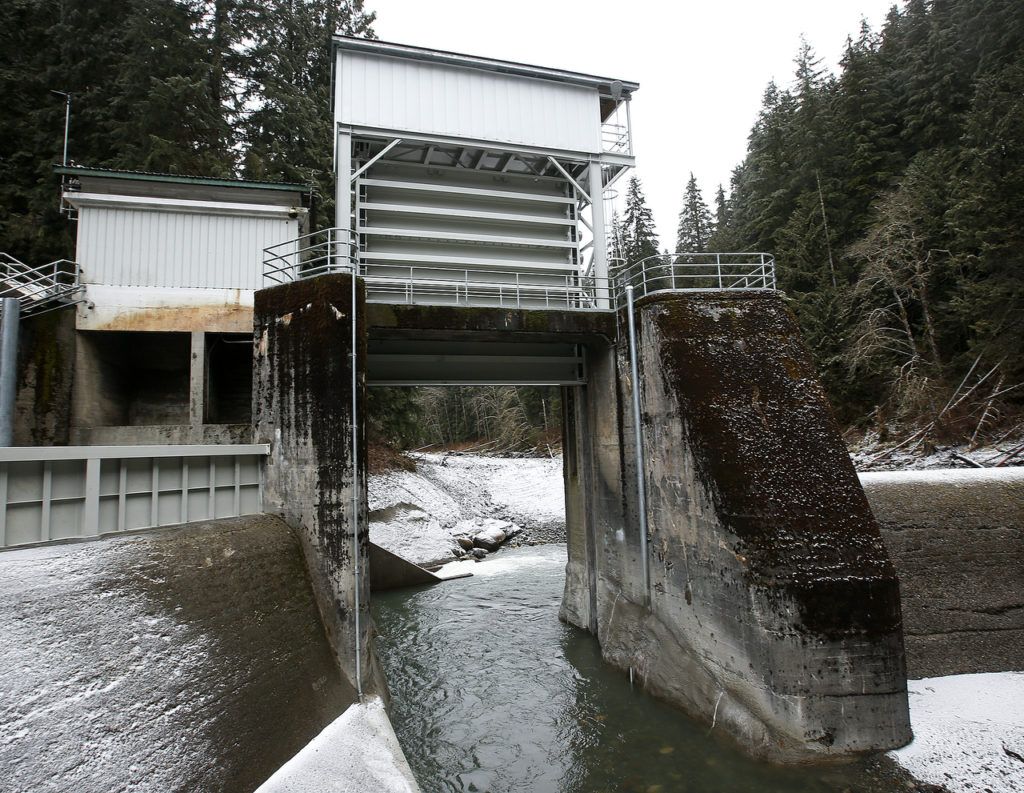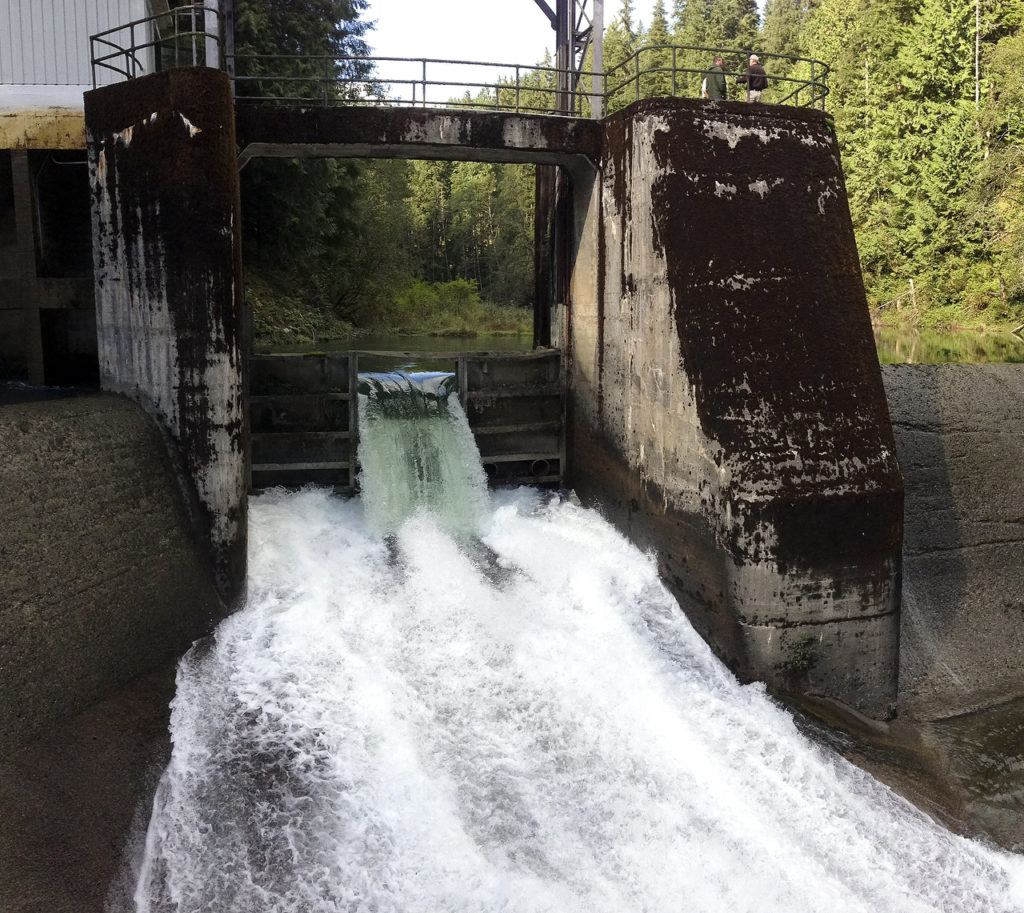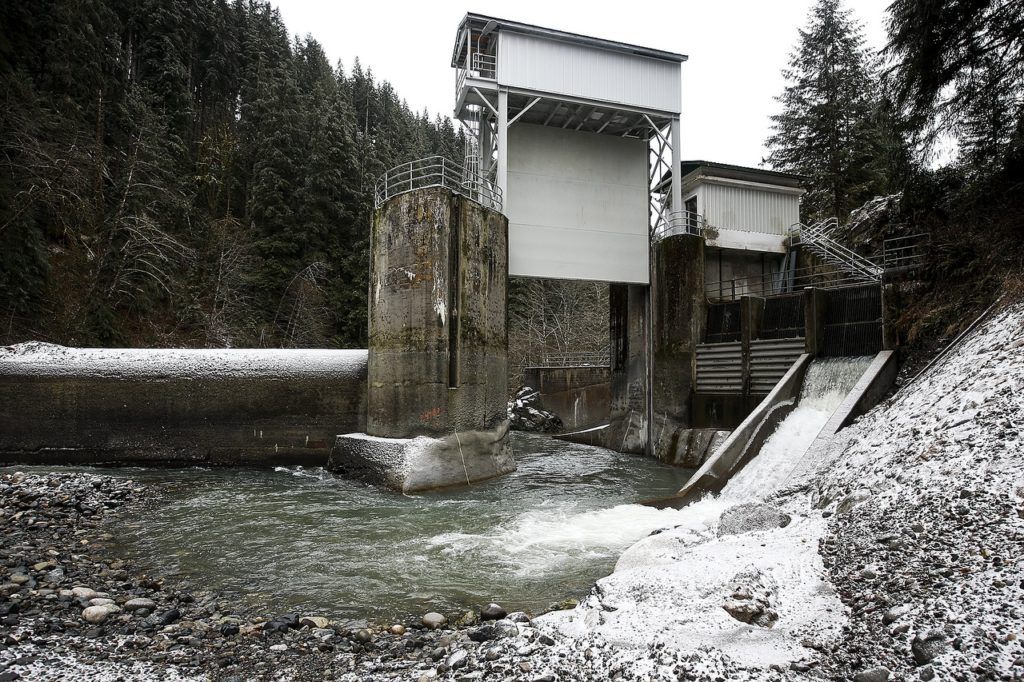SULTAN — It’s not often that a project intended to restore salmon habitat gets results quickly.
But in the case of the Sultan River diversion dam, it only took a month.
In June, the Snohomish County Public Utility District undertook a project to remove the dam’s sluiceway, a steep concrete slide to channel the flow of the river.
It was part of an agreement among the PUD, the Tulalip Tribes, the cities of Everett and Sultan, and state and federal agencies to improve fish passage.
The work involved hauling heavy equipment up a narrow dirt track to the dam to take out the sluiceway and about 12 feet of earth and gravel underneath.
That restored the riverbed to its original elevation and opened up most of the river below Spada Lake to fish — about 15 miles total. The project wrapped up in October.
Within weeks, coho redds were spotted miles upriver from the dam, where the salmon lay their eggs in the gravelly river bed.
In November, Eric Schneider, the PUD’s principal engineer, and others went to a point about 5 miles upriver from the dam.
“The idea of finding a redd was on our minds,” Schneider said.
“When they were measuring stuff I pushed upriver a bit and I found two of them. It was very neat.”
It was the first time salmon have been in that upper reach of the river in almost 90 years.
There may be more redds in the upper reach of the river, but access for humans is limited. Even dedicated access points require long hikes from logging roads.
The river flows 6 ½ miles through a steep canyon from the Spada Lake reservoir and the Culmback Dam to the diversion dam. Downstream, the Sultan River empties into the Skykomish River. It later joins the Snoqualmie River to become the Snohomish River, which empties into Puget Sound.
Tulalip Tribes Chairman Mel Sheldon Jr. said this was one of the bigger habitat restoration projects the tribes have taken part in recently.
“Not only does it benefit our fishermen, but you think about our culture’s relationship to the river, forests, it allows us to go farther up there and you have much more pristine conditions” for fish, Sheldon said.
Source of water
The City of Everett built a diversion dam in 1930 to obtain a source of drinking water. It replaced an earlier log dam that washed out after just a few years of operation.
The dam originally diverted part of the river flow into a 14-foot-wide pipe that ran to Lake Chaplain, where the city had water treatment works.
Over the years, as Everett grew, the city needed more water, so in 1965 it built the first stage of the Culmback Dam at Spada Lake. In 1984 the city and PUD came back and increased the height of the dam, more than quadrupling the storage capacity of the lake.
The PUD also built the Henry M. Jackson Hydroelectric Project at that time downriver from the old diversion dam. Its generators are fed by a tunnel from Spada Lake.
The hydro project pumps water to Chaplain for treatment and distribution. Water not used for drinking is pumped back into the river through the old diversion pipeline to increase the flow for fish.
The only function the diversion dam still has is when the Jackson Hydroelectric Project is shut down for maintenance, or the water from Spada Lake is too turbid to send through the water treatment plant. In that case, a gate at the diversion dam could shut, and the water would flow back into the diversion pipe.
That doesn’t happen often, PUD spokesman Neil Neroutsos said.
In the early 2000s, when it was time to renew the Jackson project’s federal license, restoring salmon habitat in the Sultan River basin became an important consideration, even if the diversion dam wasn’t initially considered, said Anne Savery, a Tulalip staff scientist.
“During the relicensing negotiations, the Tribes actually remained neutral on fish passage at the diversion dam,” at least initially, Savery said.
A 2004 landslide at Marsh Creek (caught on video by kayakers), about 2 miles downstream of the dam, was considered a more significant barrier to fish.
The federal agencies — National Marine Fisheries Service, National Oceanic and Atmospheric Administration, U.S. Fish & Wildlife Service — pushed for a fish study at the dam, she said.
The study showed that some salmon were making it past the slide, which meant the debris would have to be removed.
The settlement required that once 10 percent of any salmonid stock was found upstream of the slide, the diversion dam would have to be modified to allow fish passage, Savery said.
That tipping point was hit within a year of removing the slide debris from the river.
“The writing was really on the wall when we knew the fish got above the debris slide without help,” she said.
Adjusting temperature
The relicensing agreement called for a number of other projects to improve the habitat for salmon, including clearing the landslide, building side channels in the lower reaches of the river and enhancing the river bed with gravel and woody debris more suitable for fish.
The dam project was the largest project to date in the plan. It cost $2.4 million, including the excavation and a new 23-foot-high steel sluice gate. The PUD had to construct an 18-foot-high temporary dam to channel the river over the dam while the work on the gate was underway.
Removing the sluiceway will likely have the biggest impact on fish migration past the dam.
“Now when they approach, they don’t see a big ramp with water flowing down. They see a river,” Schneider said.
The water in the upper stretch of the Sultan River is only about 41 to 45 degrees, cold enough that it can inhibit salmon spawning time and growth, said Keith Binkley, the PUD’s natural resources manager.
That’s because the river is fed through the Culmback Dam from the bottom of Spada Lake.
The final element of the restoration will be to pump water from the warmer upper layers of the lake into a new pipeline, and mix that with the colder water from below.
That’s another $4 million project.
But they’re optimistic that it will be a major boon to salmon runs in the river, since the project already has yielded results faster than anticipated.
“It was kind of a surprise that, that soon after the project completion, coho would penetrate that far into the watershed,” Binkley said.
Chris Winters: 425-374-4165; cwinters@heraldnet.com. Twitter: @Chris_At_Herald.
Talk to us
> Give us your news tips.
> Send us a letter to the editor.
> More Herald contact information.




























